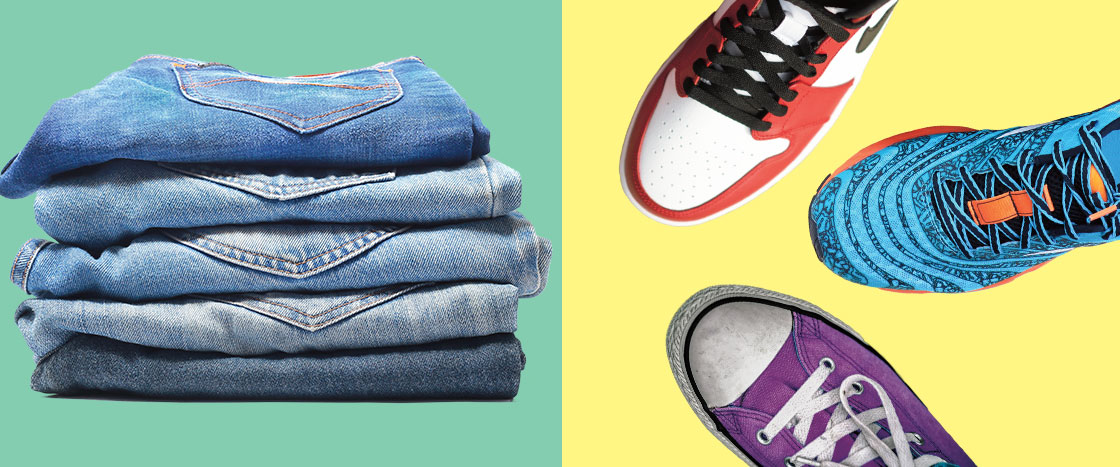It was 1870 in western Nevada. Thousands of men swarmed over dusty hills, all looking for the same thing—gold and silver.
Finding just one shiny piece could make you rich. But searching for gold and silver was backbreaking work. All day long, the workers trudged through narrow tunnels and hunched over their shovels. As they dug and scraped and sifted dirt, many faced an annoying problem: They kept ripping their pants.
A tailor from Eastern Europe named Jacob Davis would help fix that. One day, a worker’s wife came up to Davis and begged him to make her husband a stronger pair of pants. Looking at the round metal pins he used on horse blankets, Davis was struck with an idea. He clamped the pins—called rivets—onto the pockets and fly of the pants, where they most often tore.
And it worked! The strong metal rivets held the fabric together. The new pants were almost un-rippable. Soon, all the workers in the area wanted a pair.
More than 150 years later, Davis’s riveted pants are still popular. In fact, you probably have a pair in your dresser drawer right now. You know them as jeans.
It was 1870 in Nevada. Thousands of men were in the hills, all looking for gold and silver.
Finding just one shiny piece could make you rich. But searching for gold and silver was hard work. All day long, the workers trudged through narrow tunnels and bent over their shovels. As they moved the dirt, many men faced an annoying problem: They kept ripping their pants.
A tailor from Eastern Europe named Jacob Davis would help fix that. One day, a worker’s wife came to Davis and asked him to make her husband a stronger pair of pants. He looked at the round metal pins he used to make horse blankets. That gave Davis an idea. He attached the pins—called rivets—onto the pants where they most often ripped.
And it worked! The strong metal rivets held the fabric together. The new pants were much harder to rip. Soon, all the workers in the area wanted a pair.
More than 150 years later, Davis’s riveted pants are still popular. In fact, you probably have a pair in your closet right now. You know them as jeans.

